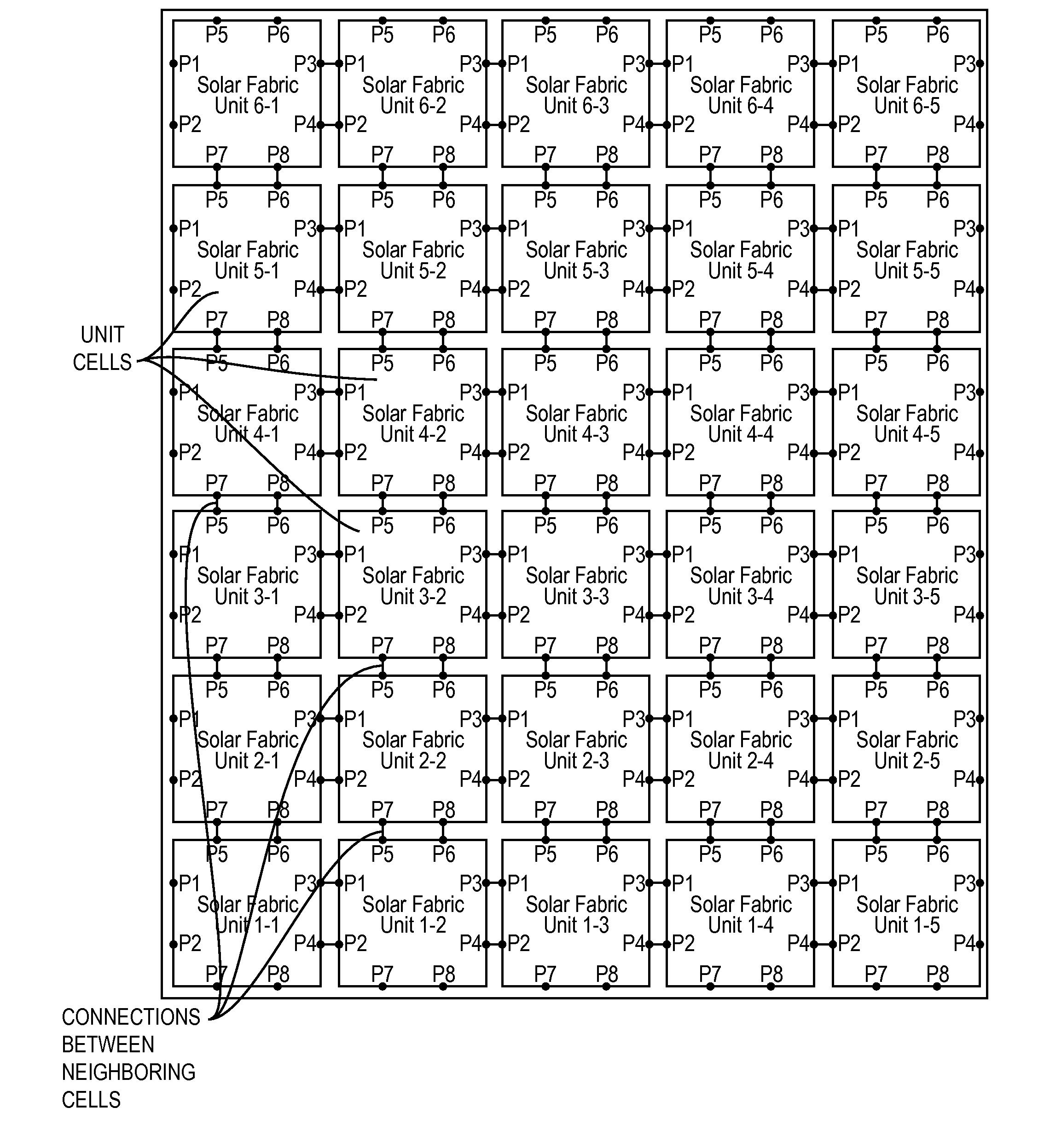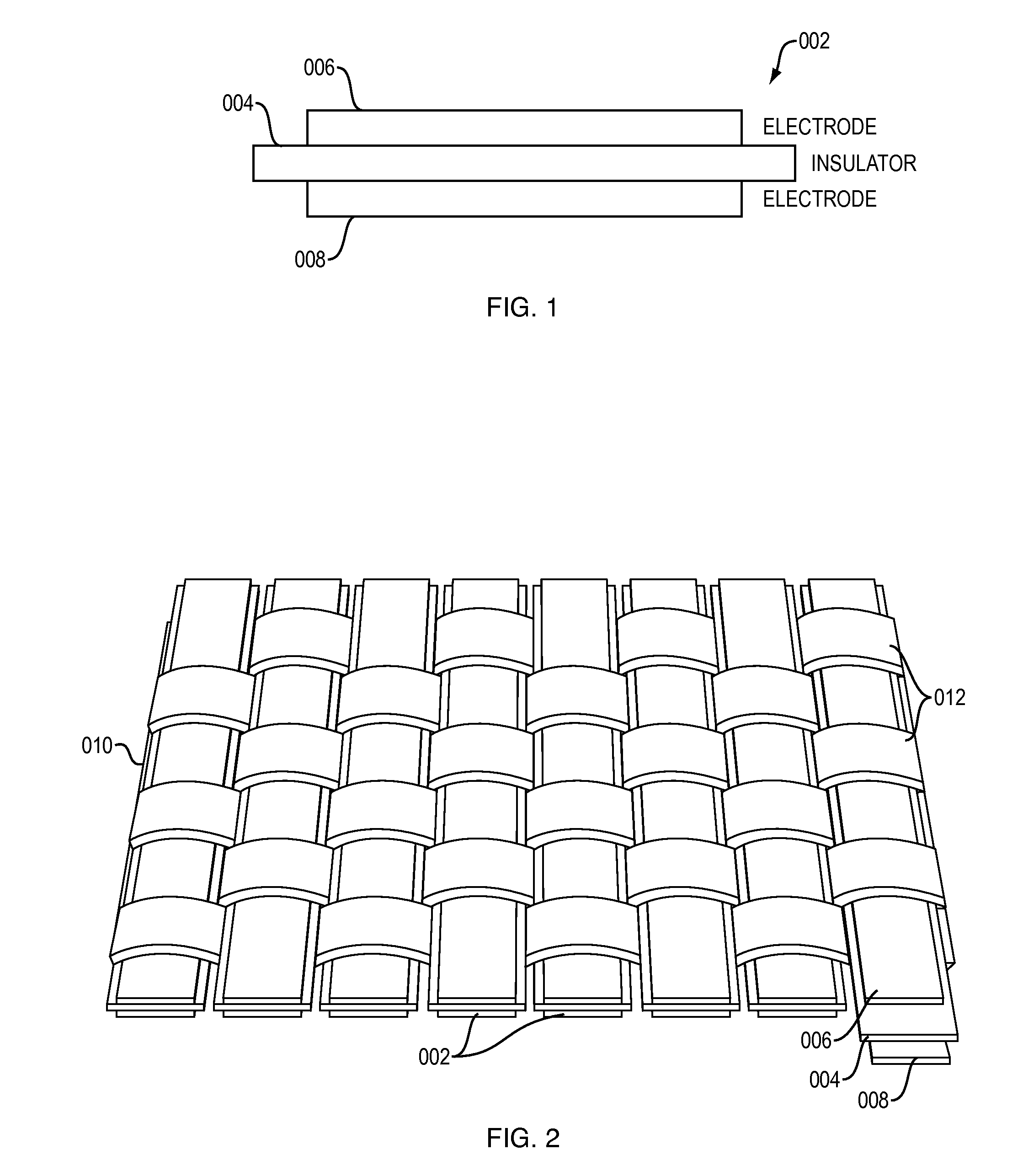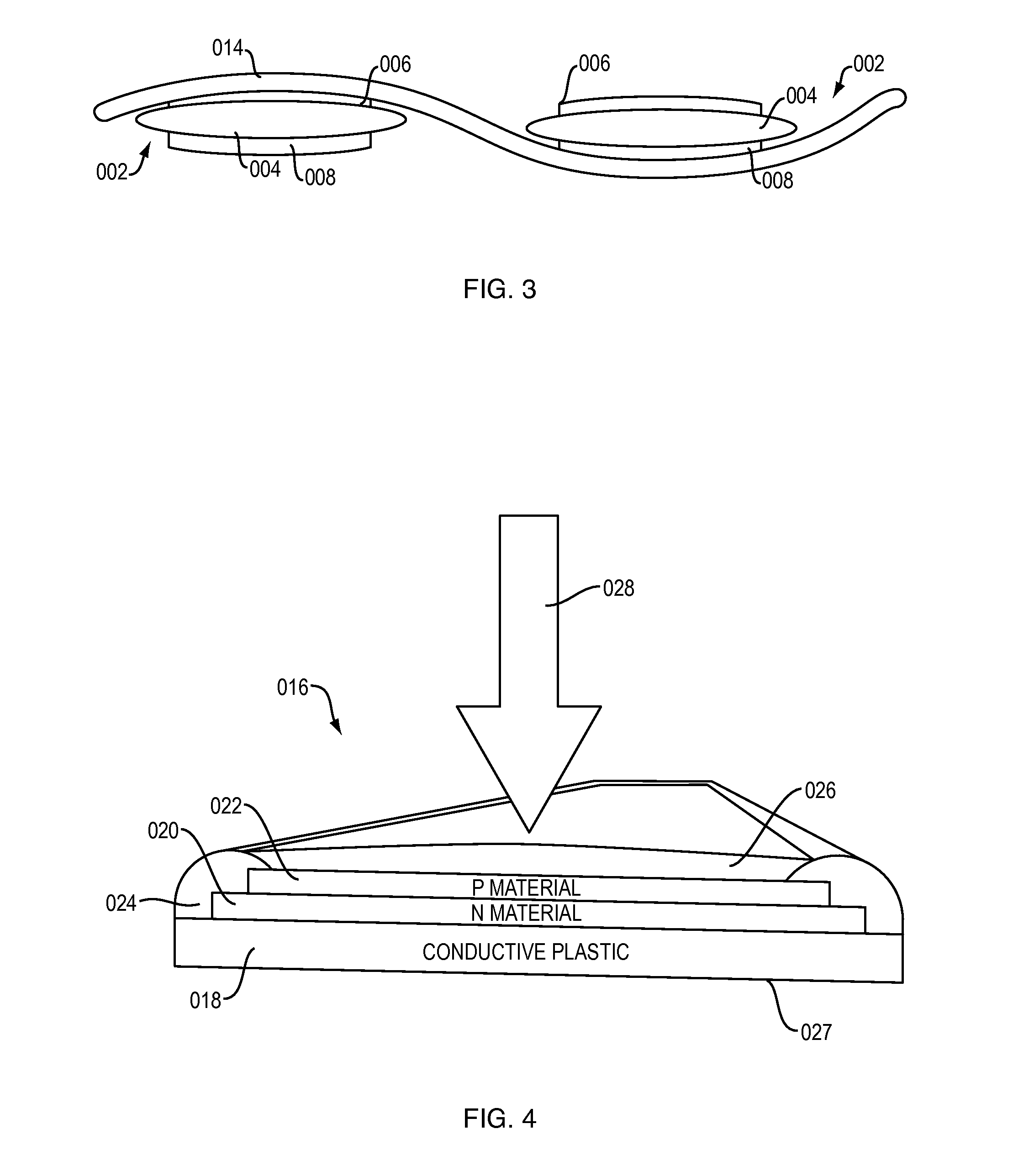Photovoltaic textiles
a technology of photovoltaic textiles and textiles, applied in the field of textiles, can solve the problems of significant voltage drop in available electricity, insufficient thickness for efficient charge transport, and inability to produce efficient solar textiles from existing ppv components, etc., and achieve the effect of low contact resistance and large electrical contact area
- Summary
- Abstract
- Description
- Claims
- Application Information
AI Technical Summary
Benefits of technology
Problems solved by technology
Method used
Image
Examples
Embodiment Construction
[0057]As used herein the term “converting means” refers to a component that is photovoltaic or otherwise produces electricity when exposed to electromagnetic radiation.
[0058]The term “deposit” covers all technologies used in coating a surface with a material including but not limited to spraying, dipping, spin coating, vacuum and chemical deposition, printing including, but not limited to, inkjet printing.
[0059]The term “electrical appliance” refers to a component that is made operable in function or capacity by current including but not limited to cell phones, global positioning systems, lights, motors, batteries, regulators, inverters, rectifiers, and transformers.
[0060]The term “interlaced” means going one over the other as to be woven or intertwined in uniform structure and geometry.
[0061]The term “integral” means fixed or made a part of during the manufacturing process.
[0062]The term “light” includes a range of electromagnetic radiation known as visible light and portions of in...
PUM
 Login to View More
Login to View More Abstract
Description
Claims
Application Information
 Login to View More
Login to View More - R&D
- Intellectual Property
- Life Sciences
- Materials
- Tech Scout
- Unparalleled Data Quality
- Higher Quality Content
- 60% Fewer Hallucinations
Browse by: Latest US Patents, China's latest patents, Technical Efficacy Thesaurus, Application Domain, Technology Topic, Popular Technical Reports.
© 2025 PatSnap. All rights reserved.Legal|Privacy policy|Modern Slavery Act Transparency Statement|Sitemap|About US| Contact US: help@patsnap.com



